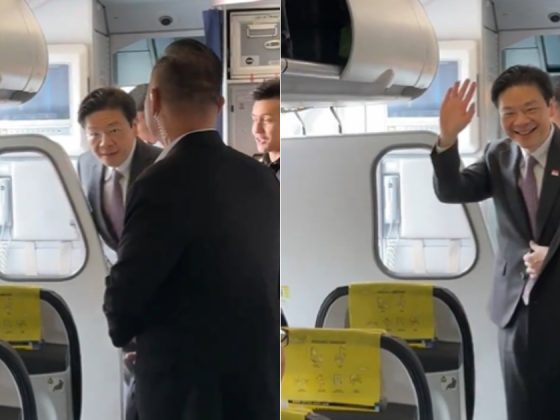- Measures adopted during the pandemic do not address the root causes of the problems facing higher education.
- Institutions need to undertake true reform, moving towards active learning, and teaching skills that will endure in a changing world.
- Formative assessment is more effective than high-stakes exams in equipping students with the skills they need to succeed.
Since the onset of the recent pandemic, schools and universities have been forced to put a lot of their teaching online. On the surface, this seems to have spurred a series of innovations in the education sector. Colleges around the world embraced more flexibility, offering both virtual and physical classrooms. Coding is making its way into more school curricula, and the SAT exam for college admission in the US has recently been shortened and digitized, making it easier to take and less stressful for students.
These changes might give the illusion that education is undergoing some much-needed reform. However, if we look closely, these measures do not address the real problems facing higher education. In most countries, higher education is inaccessible to the socio-economically underprivileged, certifies knowledge rather than nurtures learning, and focuses on easily-outdated knowledge. In brief, it is failing on both counts of quality and access.
Higher Education Trends
In the last year, we have started to see examples of true reform, addressing the root causes of the education challenge. Below are four higher education trends we see taking shape in 2022.
1. Learning from everywhere
There is recognition that as schools and universities all over the world had to abruptly pivot to online teaching, learning outcomes suffered across the education spectrum. However, the experiment with online teaching did force a reexamination of the concepts of time and space in the education world. There were some benefits to students learning at their own pace, and conducting science experiments in their kitchens. Hybrid learning does not just mean combining a virtual and physical classroom, but allowing for truly immersive and experiential learning, enabling students to apply concepts learned in the classroom out in the real world.
So rather than shifting to a “learn from anywhere” approach (providing flexibility), education institutions should move to a “learn from everywhere” approach (providing immersion). One of our partners, the European business school, Esade, launched a new bachelor’s degree in 2021, which combines classes conducted on campus in Barcelona, and remotely over a purpose-designed learning platform, with immersive practical experiences working in Berlin and Shanghai, while students create their own social enterprise. This kind of course is a truly hybrid learning experience.
2. Replacing lectures with active learning
Lectures are an efficient way of teaching and an ineffective way of learning. Universities and colleges have been using them for centuries as cost-effective methods for professors to impart their knowledge to students.
However, with digital information being ubiquitous and free, it seems ludicrous to pay thousands of dollars to listen to someone giving you information you can find elsewhere at a much cheaper price. School and college closures have shed light on this as bad lectures made their way into parents’ living rooms, demonstrating their ineffectiveness.
Education institutions need to demonstrate effective learning outcomes, and some are starting to embrace teaching methods that rely on the science of learning. This shows that our brains do not learn by listening, and the little information we learn that way is easily forgotten (as shown by the Ebbinghaus forgetting curve, below). Real learning relies on principles such as spaced learning, emotional learning, and the application of knowledge.

The educational establishment has gradually accepted this method, known as ‘fully active learning’. There is evidence that it not only improves learning outcomes but also reduces the education gap with socio-economically disadvantaged students. For example, Paul Quinn College, an HBCU based in Texas, launched an Honors Program using fully active learning in 2020, combined with internships at regional employers. This has given students from traditionally marginalised backgrounds the opportunity to apply the knowledge gained at university in the real world.
3. Teaching skills that remain relevant in a changing world
According to a recent survey, 96% of Chief Academic Officers at universities think they are doing a good job preparing young people for the workforce. Less than half (41%) of college students and only 11% of business leaders shared that view. Universities continue to focus on teaching specific skills involving the latest technologies, even though these skills and the technologies that support them are bound to become obsolete. As a result, universities are forever playing catch up with the skills needed in the future workplace.
What we need to teach are skills that remain relevant in new, changing, and unknown contexts. For example, journalism students might once have been taught how to produce long-form stories that could be published in a newspaper; more recently, they would have been taught how to produce shorter pieces and post content for social media. More enduring skills would be: how to identify and relate to readers, how to compose a written piece; how to choose the right medium for your target readership. These are skills that cross the boundaries of disciplines, applying equally to scientific researchers or lawyers.
San Francisco-based Minerva University, which shares a founder with the Minerva Project, has broken down competencies such as critical thinking or creative thinking into foundational concepts and habits of mind. It teaches these over the four undergraduate years and across disciplines, regardless of the major a student chooses to pursue.

4. Using formative assessment instead of high-stake exams
If you were to sit the final exam of the subject you majored in today, how would you fare? Most of us would fail, as that exam did not measure our learning, but rather what information we retained at that point in time. Equally, many of us hold certifications in subject matters we know little about.
Many people gain admission to higher education based on standardized tests that skew to a certain socio-economic class, rather than measure any real competency level. Universities then try to rectify this bias by imposing admission quotas, rather than dissociating their evaluation of competence from income level. Many US universities are starting to abandon standardized tests, with Harvard leading the charge, and there have been some attempts to replace high-stake exams with other measures that not only assess learning outcomes but actually improve them.
Formative assessment, which entails both formal and informal evaluations through the learning journey, encourages students to actually improve their performance rather than just have it evaluated. The documentation and recording of this assessment includes a range of measures, replacing alphabetical or numerical grades that are uni-dimensional.
The International School in Geneva just launched its Learner Passport that includes measures of creativity, responsibility and citizenship. In the US, a consortium of schools have launched the Mastery Transcript Consortium that has redesigned the high school transcript to show a more holistic picture of the competencies acquired by students.
Education reform requires looking at the root cause of some of its current problems. We need to look at what is being taught (curriculum), how (pedagogy), when and where (technology and the real world) and whom we are teaching (access and inclusion). Those institutions who are ready to address these fundamental issues will succeed in truly transforming higher education.\
Republished from the World Economic Forum










